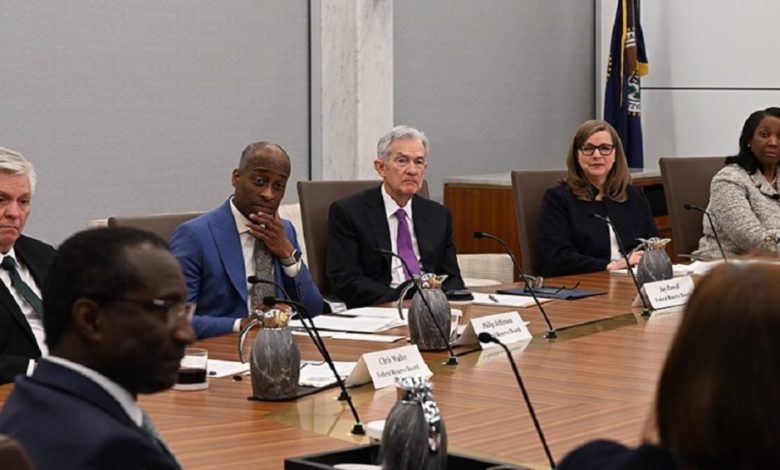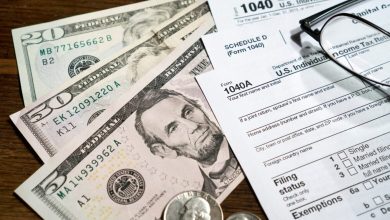Federal Reserve Split Deepens as Policymakers Signal Doubts About December Rate Cut
Inflation concerns, uncertain data, and growing internal divisions cast doubt on whether the Fed will reduce interest rates again in 2025.

A growing number of Federal Reserve policymakers have expressed reservations about further interest rate cuts, citing concerns about inflation and signs of relative stability in the labor market after two rate reductions this year. Their comments have pushed the odds of a December borrowing-cost reduction to below 50%, according to Reuters.
Mary Daly, president of the San Francisco Federal Reserve — previously a strong supporter of Fed rate cuts — said any decision four weeks before the next policy meeting would be “premature.”
She added during an event in Dublin, Ireland: “My mind is open, but I haven’t finalized my thinking, and I look forward to discussing it with my colleagues.”
Meanwhile, Minneapolis Fed President Neel Kashkari said he believes a third rate cut by the end of this year will be necessary. He noted that he opposed last month’s cut due to the economy’s resilience and remains undecided about December.
He added at a conference hosted by his regional Fed bank: “Inflation is still too high, at around 3%. Some sectors of the U.S. economy are performing exceptionally well, while parts of the labor market appear under pressure.”
Short-term interest-rate futures — the most immediate indicator of financial markets’ expectations for Fed policy — now price in a 47% chance that the Federal Open Market Committee will cut borrowing costs on December 10, during its final monetary-policy meeting of 2025. Earlier this week, futures priced a 67% chance.

Division and Hesitation
Boston Fed President Susan Collins also appeared cautious, saying Wednesday that she sees a “relatively high bar” for more near-term easing.
“In the absence of clear evidence of a significant deterioration in the labor market, I would be reluctant to ease policy further, especially given the limited inflation data because of the government shutdown,” Collins told a Boston banking conference. She added that interest rates will likely need to remain unchanged “for some time.”
Collins’ unusually direct comments — despite voting for both rate cuts this year — highlight growing divisions within the central bank and signal the lack of consensus on a potential third cut.
Fed Chair Jerome Powell pointed to similar challenges two weeks ago after the central bank lowered rates to 3.75%–4.00%.
He said a December cut is “far from certain,” especially given the lack of official data, which reduces visibility into the economy’s true condition.
Following Collins’ remarks — and White House guidance indicating that inflation and labor-market data disrupted by the shutdown will likely be incomplete even if released before the meeting — financial markets reduced earlier strong bets on a December quarter-point cut.
Disagreement Ahead of the December Meeting
Regardless of the outcome in December, Powell may face more opposition than he did last month, when Kansas City Fed President Jeffrey Schmid argued that high inflation justified resisting further easing, while Governor Steven Miran called for a larger half-point cut, believing inflation is cooling faster than widely recognized.
Since then, several of the twelve voting policymakers have expressed caution about further cuts. Among them are St. Louis Fed President Alberto Musalem, who reiterated Thursday that policy must “move to confront” inflation, and Fed Vice Chair Philip Jefferson, who said patience is “extremely wise” given the lack of official data.
Non-voting policymakers — including Atlanta Fed President Raphael Bostic and Cleveland Fed President Beth Hammack — have also expressed a preference for holding rates steady.
Krishna Guha, vice chair at Evercore ISI, wrote Thursday: “Collins’ forceful stance against a December rate cut raises our concerns about Powell’s struggle to manage deep divisions inside the FOMC and adds more uncertainty to the rate-path outlook.”
Guha noted that if the Fed cuts rates, Collins and Musalem may join Schmid in dissent — possibly along with Chicago Fed President Austan Goolsbee or Governor Michael Barr.
If the FOMC keeps rates unchanged, the dissent could come from Trump-appointed members Christopher Waller and Michelle Bowman, both of whom have called for easing.

Unclear Data
Recent private-sector data may support arguments on either side.
ADP reported Tuesday that U.S. companies have been shedding more than 11,000 jobs per week through late October. At the same time, TLR Analytics said its sales-tax distribution index shows no economic red flags: “Sales-tax revenues are very strong, and the two-month average exceeds 50%.”
Inflation data remains difficult to assess. Torsten Slok, chief economist at Apollo, estimates that prices for 55% of goods in the consumer-price index — the most widely used inflation gauge — are rising faster than 3%.
He said: “The Fed’s inflation target is 2%, which is why it will be difficult for the Fed to cut interest rates in December.”



